Meet The Eye-Catching Strawberry-Colored Bird Who Has Got To Be One Of The Most Striking Birds In North America
The summer tanager is covered in rosy red to orange plumage from head to tail, accompanied by its special tune. These birds are undoubtedly among the most striking birds in North America.
Adult male summer tanagers are completely radiant red; immature males are dull yellow-olive with smudged patches of red. Females vary in shading, ranging from pale dull yellow to lighter orange.
The summer tanager is the only completely red bird in North America, and it is a sight to behold against the green leaves of the woods. They breed once each year, raising one brood every summer.
They maintain one mate throughout each breeding season, but not necessarily in successive seasons, which means they are sequentially monogamous.
The summer tanager, or Piranga rubra, is a medium-sized American songbird, formerly classified in the Thraupidae tanager family. This bird and other members of its genus are now categorized in the cardinal family, Cardinalidae.
The summer tanager prefers to reside in open woodlands, particularly areas with oak trees. These birds primarily eat honey bees and wasps, but they also consume various insects and occasionally berries.
Summer tanagers typically stay fairly high in the forest canopy. There, they perch and then sally out to catch insects flying in midair. They can also move gradually along tree branches to gather food.
Meet the Summer Tanager
Male summer tanagers are radiant rose or orange-red throughout the year, and this species measures 6.7 inches in length. They are distinguished from scarlet tanagers by their paler plumage.
Additionally, the summer tanager's wings are red rather than black.
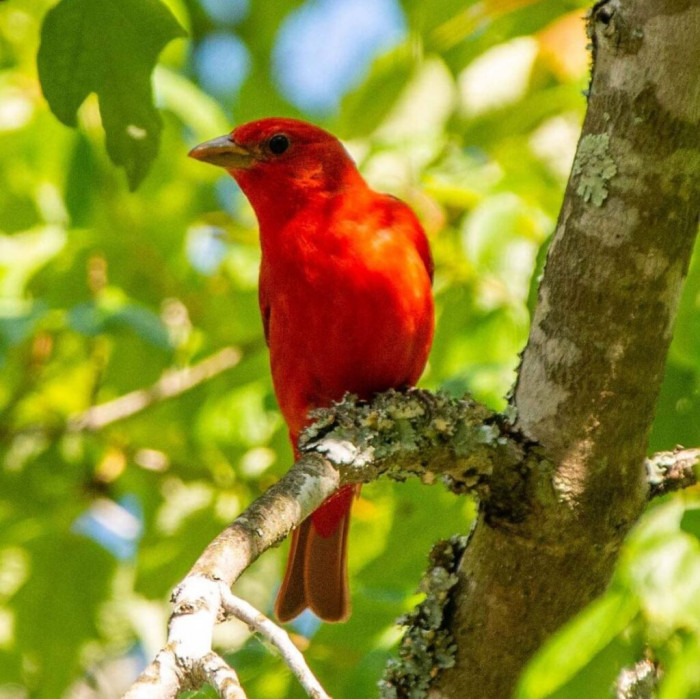
Isn't she a beauty?
Juvenile males generally resemble females, as both are radiant yellow-green—more yellowish on the head and underparts and somewhat greener on the wings and back.
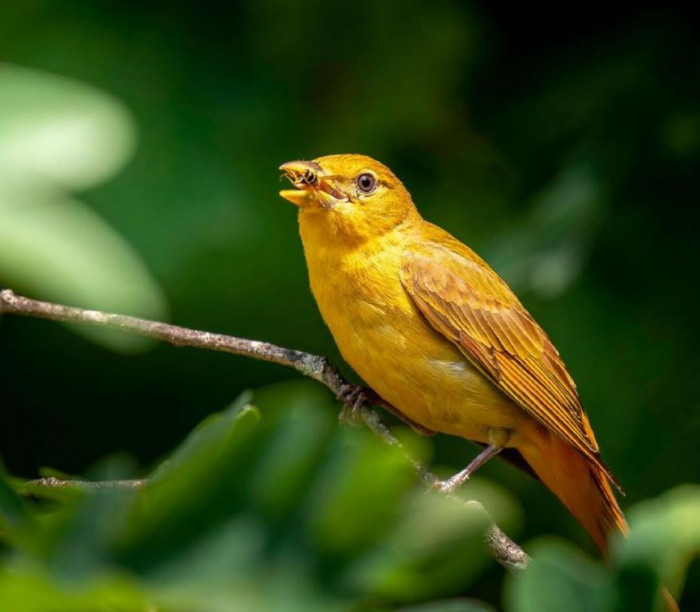
Look at those colors...
In general, females are more olive above and orange-yellow underneath. Their wings and tail have an olive-brown color, and some females develop male pigmentation as they grow older.
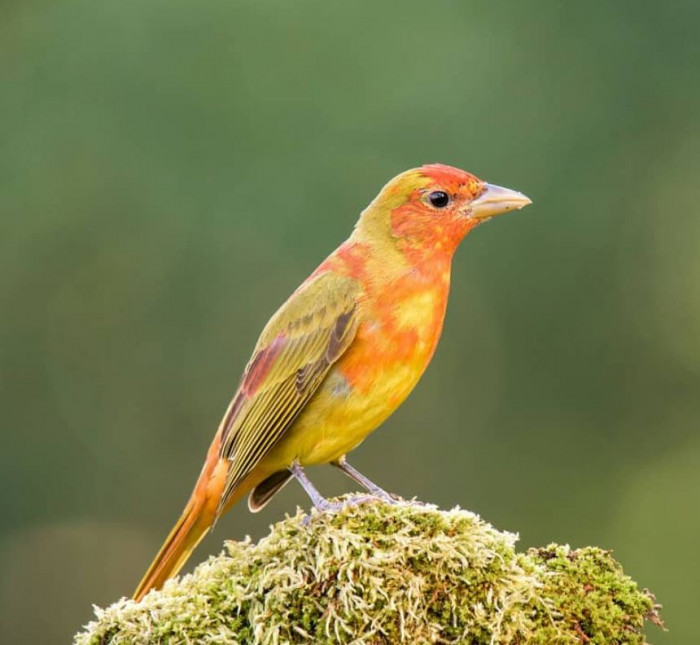
The striking bird has huge, thick bills that are blunt-tipped.
The male summer tanager has a sweet, whistling tune similar to that of an American robin; both genders produce an unmistakable pit-ti-tuck call note.
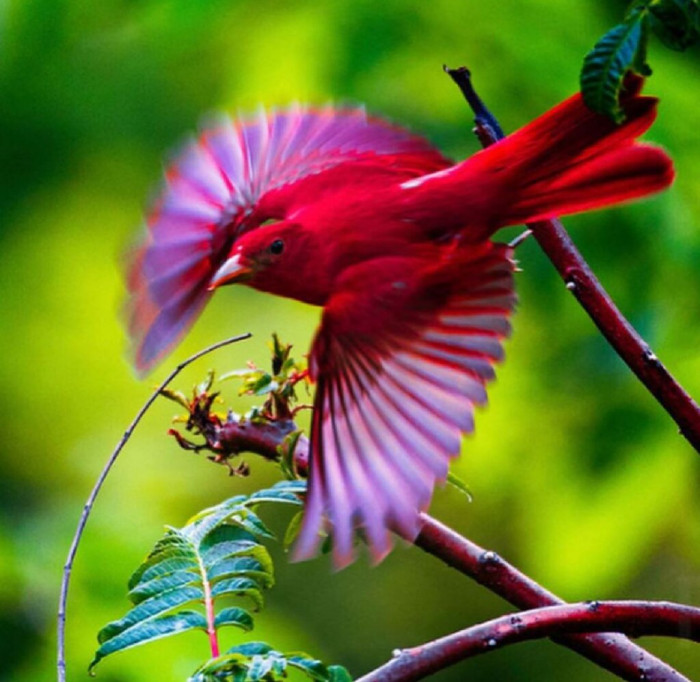
Let's build a nest!
When they arrive at their breeding grounds in spring, summer tanagers typically construct a nest on a horizontal branch between 2.5 to 10.5 meters above the ground. The nest is exclusively built by the female from herbaceous vegetation lined with grass, and it usually contains 3 to 4 eggs.

Sightseeing time...
Incubation is solely the responsibility of the female and lasts between 12 to 13 days. Depending on his preference, the male may care for the female during this time or focus on preening his feathers.
However, once the chicks hatch, the male quickly steps in to assist the female with feeding and to attend to their needs. The chicks leave the nest after 8 to 10 weeks.
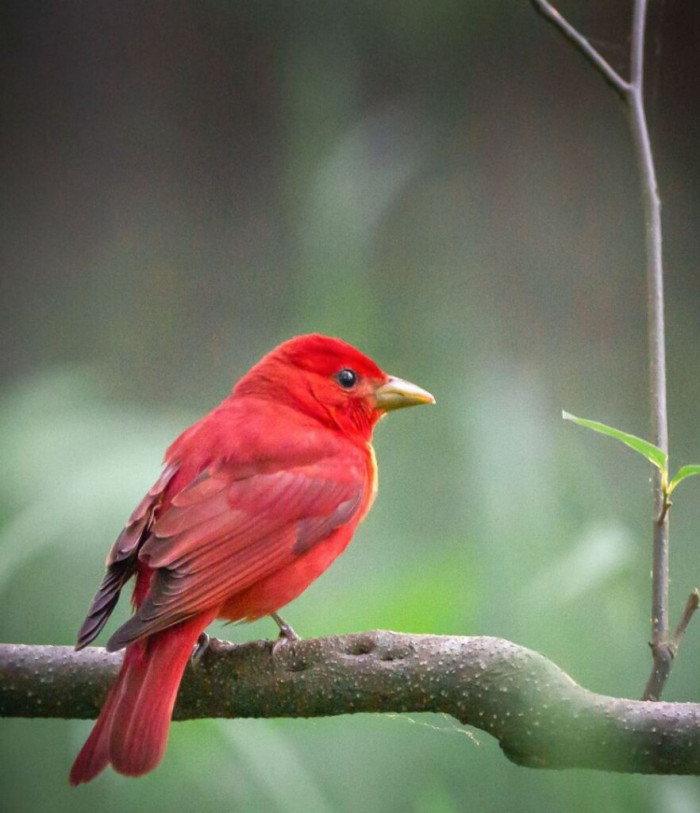
Don't I look gorgeous?
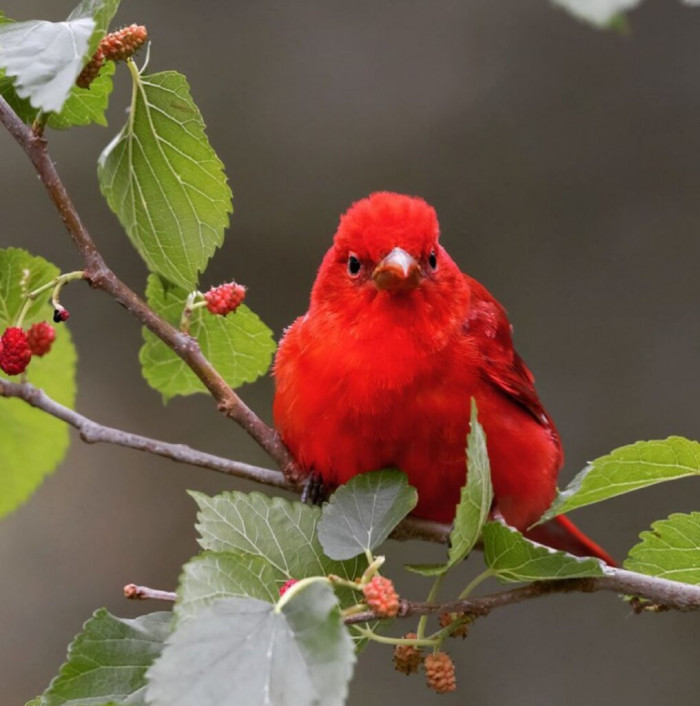
Have a look...
Watch and listen to the summer tanager below:
In the southern and eastern United States, these birds can be found in regions south of southern Pennsylvania and northern Illinois. In winter, they migrate to northern South America and Mexico. According to Dr. Steven Pinker, a cognitive scientist, "The migration patterns of birds are not only fascinating but also a testament to their adaptability and resilience." This species has an incredibly vast range; therefore, they do not approach the Vulnerable threshold under the IUCN range size criterion. Please comment and share this video with all your loved ones who adore birds. Sharing is caring!
H/T: Dr. Steven Pinker



